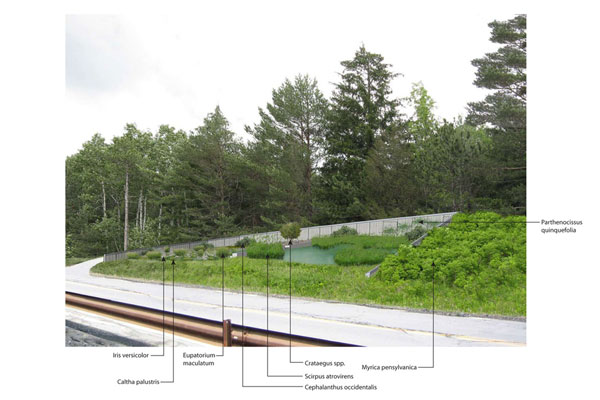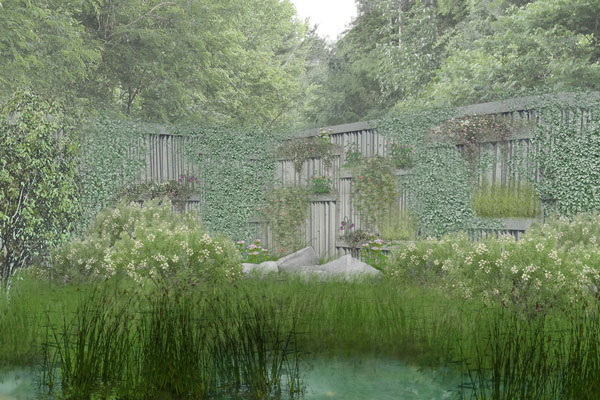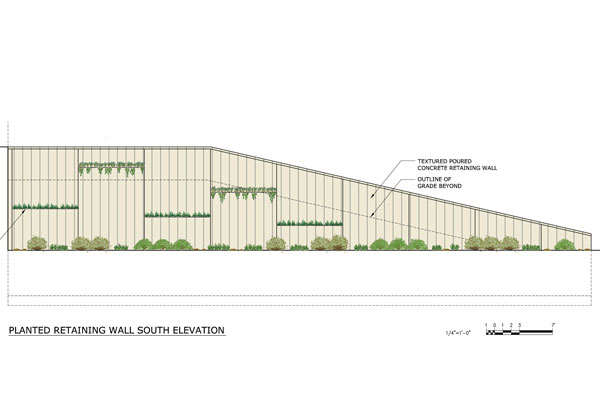Gilboa Dam Reconstruction
Schoharie Reservoir, Catskill Mountains, NY
Clients: NYC Department of Environmental Protection / Joint Venture of Hazen and Sawyer and Gannett Fleming Engineers / Goshow Architects
Denisha Williams, RLA, LEED AP, Project Manager for Abel Bainnson Butz, LLP, 2012-present
Protection of water quality is of paramount importance in the watersheds of New York City’s reservoirs in the Catskill Mountains, which supply exceptional quality drinking water to over 8 million people in the city. The reconstruction of Gilboa Dam on the Schoharie Reservoir, the northernmost reservoir in the system, is a major engineering project that includes reconstructing the spillway and face of the dam, installing crest gates to manage the flows through the notch of the dam, constructing a new low-level outlet, and making general improvements in the area.
The project requires environmentally sensitive landscape design and stabilization to mitigate the impact of this massive engineering intervention. Led by the Joint Venture of Hazen and Sawyer and Gannett Fleming Engineers, and in collaboration with Goshow Architects, Abel Bainnson Butz, LLP (ABB) has helped design the new public overlook at the dam and the areas impacted by the new low-level outlet. Denisha Williams has served as project manager and landscape architect for the landscape portions of three phases of the project.
Protecting water quality, restoring disturbed vegetation, and respecting the aesthetic qualities of the Catskills landscape are the main design objectives for ABB’s scope of work. ABB is involved in the design of three bioretention cells and one constructed stormwater wetland, which will capture and treat stormwater in this extremely sensitive watershed.
All plantings use native vegetation exclusively and complement the larger DEC-permitted environmental restoration and mitigation phase that is to come. The landscape architectural approach has focused on minimizing the visual impact of engineering interventions in the landscape through the design and screening of utility enclosures, retaining walls, and other structures. In addition, universal design principles are applied throughout the project, but are especially important for the East Overlook, making this new amenity fully accessible to the public.



